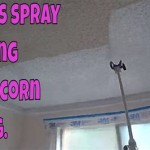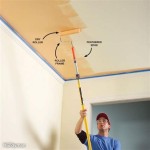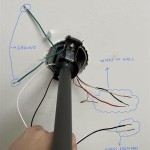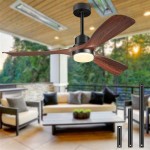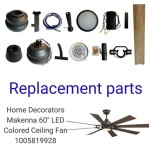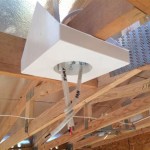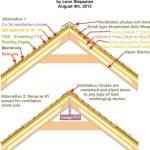Water Leaking From Basement Ceiling: Causes, Identification, and Solutions
Water leaking from a basement ceiling is a concerning issue that demands prompt attention. It can indicate a variety of problems, ranging from minor plumbing defects to serious structural damage. Identifying the source of the leak is crucial for implementing effective repairs and preventing further deterioration of the building's integrity. This article will explore the common causes of water leaks in basement ceilings, methods for identifying the source, and potential solutions to address the problem.
Identifying Potential Causes of Basement Ceiling Leaks
The source of water leaking from a basement ceiling is rarely located directly above the point where the water is dripping. Water can travel along pipes, joists, and other structural elements before manifesting as a visible leak. Therefore, a thorough investigation of the area above the basement is essential. Several potential causes should be considered:
Plumbing Issues: Plumbing leaks are among the most frequent culprits of basement ceiling leaks. This can include leaking pipes from bathrooms or kitchens located above the basement. Supply lines for sinks, toilets, showers, and dishwashers are all potential sources. Drain lines can also leak, particularly if they are cracked, corroded, or improperly sealed. These leaks might be constant, intermittent, or only occur when specific fixtures are in use. The type of water can provide clues. Clean, potable water suggests a supply line leak, while dirty or foul-smelling water suggests a drain line issue. Condensation on cold water pipes can also drip, mimicking a leak, particularly during humid periods.
Toilet Issues: Toilets located directly above a basement are a significant source of potential leaks. A leaky wax ring seal between the toilet and the drain pipe is a common problem. This can occur due to improper installation, shifting of the toilet over time, or wear and tear on the wax ring. Overflowing toilets, even minor overflows, can also contribute to leaks in the basement ceiling. Problems with the toilet tank, such as a faulty fill valve or flapper, can also cause water to continuously run and leak.
Appliance Malfunctions: Appliances located above the basement, such as washing machines, dishwashers, and refrigerators with ice makers, can also be sources of leaks. Supply lines to these appliances can corrode or become loose, leading to water leakage. Drain lines from washing machines and dishwashers can also become clogged or damaged, causing overflows. Defective water lines in refrigerators with ice makers are also a common cause of leaks. Regularly inspecting the hoses and connections for these appliances can help prevent leaks from occurring.
Exterior Water Intrusion: Water can enter the basement from outside due to issues with the foundation, landscaping, or drainage systems. Cracks in the foundation walls or floor can allow water to seep into the basement. Improper grading around the foundation can direct water towards the building, increasing the risk of leaks. Clogged or poorly maintained gutters and downspouts can also contribute to water intrusion by allowing water to accumulate near the foundation. Hydrostatic pressure, the pressure exerted by groundwater on the foundation, can also force water through even small cracks or porous areas in the concrete.
Roofing Problems: Although seemingly distant, roof leaks can sometimes manifest as water leaking from a basement ceiling. Water can travel down walls and through floors, eventually reaching the lowest point in the building. Leaks in the roof can be caused by damaged or missing shingles, faulty flashing, or ice dams. Inspecting the roof regularly and addressing any issues promptly can prevent water from entering the building and causing damage in unexpected locations.
HVAC Systems: Air conditioning systems and furnaces can also contribute to basement ceiling leaks. Air conditioning systems produce condensation, which is typically drained away through a drain line. If the drain line becomes clogged or damaged, condensation can overflow and leak into the basement. Furnaces that use humidifiers can also leak if the humidifier malfunctions or the water supply line is damaged. Regularly inspecting and maintaining HVAC systems can help prevent these types of leaks.
Methods for Identifying the Leak Source
Once potential causes have been identified, the next step is to pinpoint the exact source of the leak. This may require a combination of visual inspection, testing, and detective work. Careful observation and a systematic approach are essential for accurate diagnosis.
Visual Inspection: A thorough visual inspection of the area above the basement is the first step. Look for any signs of water damage, such as water stains, discoloration, or mold growth. Examine pipes, fixtures, and appliances for signs of leaks or corrosion. Pay close attention to areas where pipes penetrate walls or floors, as these are common locations for leaks. Use a flashlight to inspect hard-to-reach areas. Touching potentially damp areas may leave coloration on your fingers. This can help determine if the water is clean, dirty, or oily, helping to narrow down the source.
Water Testing: If the source of the leak is not immediately obvious, water testing can be helpful. One method involves using food coloring to trace the water. Add a small amount of food coloring to the water in a toilet tank, sink, or shower and then flush or run the water. Observe the basement ceiling for any signs of colored water, which can help identify the source of the leak. Another method involves using a moisture meter to measure the moisture content of building materials. This can help pinpoint the location of the leak and determine the extent of the water damage. Check for moisture in the wall cavities and floor joists.
Pressure Testing: Pressure testing involves pressurizing water pipes to check for leaks. This is typically performed by a qualified plumber. The plumber will isolate sections of the plumbing system and pressurize them with air or water. Any leaks will be indicated by a drop in pressure. This method is particularly useful for identifying hidden leaks within walls or floors.
Infrared Thermography: Infrared thermography uses a thermal imaging camera to detect temperature differences. This can be helpful for identifying hidden leaks, as water can change the thermal properties of building materials. Areas with moisture will typically appear cooler than surrounding areas. This method is non-invasive and can be used to scan large areas quickly. Interpretation of the results, however, requires experience and expertise.
Professional Leak Detection: In some cases, identifying the source of a water leak can be challenging and require the expertise of a professional leak detection service. These services use specialized equipment, such as acoustic listening devices and fiber optic cameras, to locate hidden leaks without causing extensive damage. They can also perform more advanced testing, such as smoke testing, to identify leaks in drain lines.
Solutions for Addressing Basement Ceiling Leaks
Once the source of the leak has been identified, the next step is to implement the appropriate solution. The specific solution will depend on the cause of the leak and the extent of the damage. A prompt and effective response is essential to prevent further deterioration of the building.
Plumbing Repairs: Leaking pipes can be repaired by patching, replacing sections of pipe, or tightening connections. A qualified plumber should perform these repairs to ensure they are done correctly and safely. Corroded or damaged pipes should be replaced to prevent future leaks. Consider replacing older pipes with newer, more durable materials. Properly insulating pipes can also prevent condensation and reduce the risk of leaks.
Toilet Repairs: Leaky wax ring seals should be replaced by a plumber. The toilet should be properly installed to ensure a tight seal. Faulty toilet tank components, such as fill valves and flappers, should be replaced. Regularly inspecting and maintaining toilets can prevent leaks from occurring. Educate household members on proper toilet usage to avoid overflows.
Appliance Repairs: Leaking appliance supply lines should be replaced with new, reinforced hoses. Corroded or damaged drain lines should be replaced. Defective water lines in refrigerators with ice makers should be repaired or replaced. Regularly inspecting and maintaining appliances can prevent leaks from occurring. Cleaning out drain lines regularly can also prevent clogs and overflows.
Foundation Repairs: Cracks in the foundation walls or floor should be sealed with epoxy or other suitable materials. Exterior waterproofing can be applied to the foundation to prevent water from seeping in. Improving drainage around the foundation can help reduce hydrostatic pressure. This may involve re-grading the landscaping, installing French drains, or extending downspouts away from the foundation. A structural engineer may be needed to assess significant structural damage.
Roof Repairs: Damaged or missing shingles should be replaced. Faulty flashing should be repaired or replaced. Ice dams should be prevented by improving attic insulation and ventilation. A professional roofing contractor should perform these repairs to ensure they are done correctly. Regular roof inspections and maintenance can prevent leaks from occurring.
HVAC Repairs: Clogged or damaged air conditioning drain lines should be cleared or replaced. Leaking humidifier water supply lines should be repaired or replaced. Regularly inspecting and maintaining HVAC systems can prevent leaks from occurring. Consider installing a condensate pump to ensure proper drainage.
Mold Remediation: If water has been leaking for an extended period, mold growth may have occurred. Mold can pose health risks and should be remediated by a qualified professional. Mold remediation typically involves removing the mold, cleaning the affected areas, and addressing the source of the moisture. Preventing future moisture intrusion is essential to prevent mold from returning.
By carefully identifying the source of the water leak and implementing the appropriate solution, homeowners can protect their property from further damage and ensure a healthy living environment. Regular maintenance and prompt attention to potential problems are key to preventing basement ceiling leaks and maintaining the integrity of the building.

Why Is My Basement Ceiling Wet Rainbow Restoration

My Ceiling Is Wet And I Can T Find The Water Leak A J Restoration

Finding The Source Of A Basement Water Problem Energy Vanguard

Water Damage In Your Ceiling Isn T Always Easy To Spot Servpro

Finding The Source Of A Basement Water Problem Energy Vanguard

Why Is My Basement Ceiling Leaking Find The Answers Here

Basement Water Leaks Can Come From Above Home Repair Advice Youtube

Sleuthing A Basement Moisture Problem Greenbuildingadvisor

Water Damage In Your Ceiling Isn T Always Easy To Spot Servpro

Wipe Out Smelly Mold Mildew After A Leak With Wet Forget Blog
